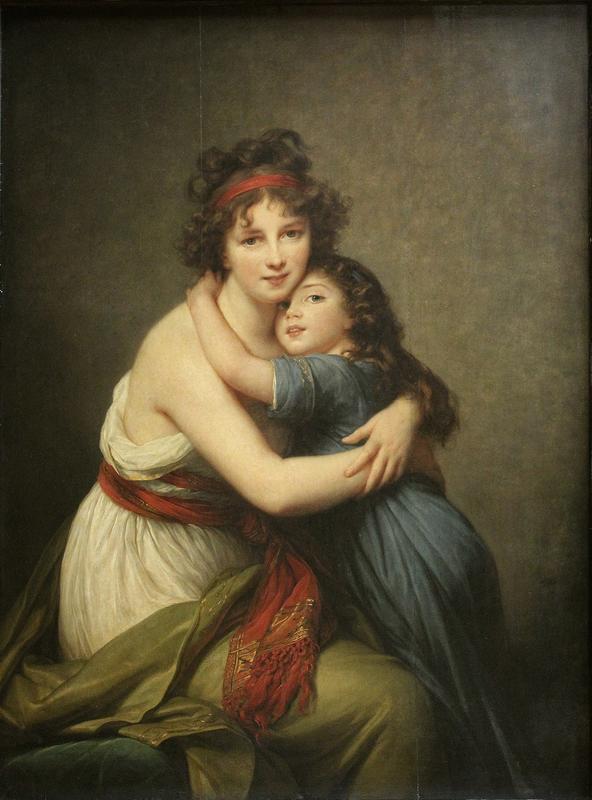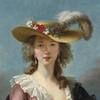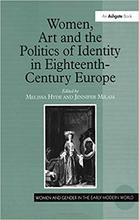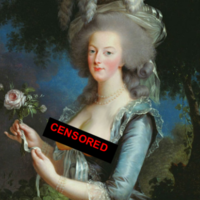More about Self-Portrait with Her Daughter, Julie
- All
- Info
- Shop

Sr. Contributor
When Murphy Brown said that single motherhood was just another lifestyle choice, she forgot to mention what a thankless b*tch it can be. Louise Vigee Le Brun could have told her that.
Louise described the birth of her daughter Julie as the greatest joy of her life. This self-portrait shows why. Louise was a very pretty woman and knew it, “Ravished by the charm of her own appearance,” as one critic quipped. Julie was an adorable porcelain doll of a child, the perfect complement to her mother’s beauty.
Louise fled France with Julie in tow to escape the Revolution, as well as accusations of extravagance and adultery, leaving behind her deadbeat husband and most of her fortune. He didn’t shed any tears over her desertion, spending her hard-earned money on gambling and whores. Enemies called Louise “a self-seeking woman” and “a heartless mother,” probably because she had the audacity to work for a living.
While they were in Russia, Julie grew into a devastatingly beautiful teenager with blue, Margaret Keane eyes and perfect teeth (in the days before orthodontists). Like any girl of 17, she was a rebellious, boy-crazy drama queen. Louise hoped to marry her off to a promising French artist, but Julie had a thing for emo boys. She fell in love with a broodingly handsome young secretary with no talent or fortune. Louise opposed the marriage, but when Julie appeared to be starving herself, she agreed to write her estranged husband for consent. Julie was convinced that her mother was poisoning her father against the match, and grew increasingly vindictive towards her.
Meanwhile, Louise was quite the diva herself. She developed a paranoid fantasy that just about everyone in Russia (including the Emperor) was conspiring to alienate her daughter’s affection and get their hands on her nonexistent dowry by plotting her elopement. She was especially suspicious of Julie’s governess, whom she described as a “harpy” with a “viper’s tongue.” Burn! She alleged that the governess had corrupted Julie by allowing her to read (Gasp!) novels…horror of horrors!
Finally, the absentee father sent his permission. Louise threw her daughter a lovely wedding, for which Julie showed no gratitude whatsoever. Very My Super Sweet Sixteen. The newlyweds lived happily ever after. Well, for two weeks anyway, but who’s counting? After a fortnight, Julie confessed to her mother that she was turned off by the way her groom looked in his robe, remarking, “How do you expect me to be in love with a get-up like that?”
After Julie’s marriage unraveled (I mean, who could forgive that damned robe?), and Louise was allowed to return from exile, mother and daughter found themselves together again in Paris. Louise refused to let Julie move in with her because she had “a taste for bad company.” Furthermore, though her career abroad had made Louise a rich woman, she offered only the bare minimum of financial assistance to her daughter, even as Julie lay penniless and dying at age 39. Julie was reduced to selling her undergarments to make ends meet.
However, as Louise left her daughter’s deathbed she was on the brink of collapse, leaning on a friend’s arm for support. She never recovered from the shock, but found a way to console herself…rumor has it with a much younger lover when she was well into her eighties. Apparently a twenty-year long guilt trip is marvelous for a woman’s sexual stamina. So that’s Joan Collins’ secret!















This piece is very calm, almost serene in the mood. The oils are blended well together to give a soft feel to the painting, making the edges blurred. A fascinating aspect of the painting is the outfit Vigee LeBrun depicted herself in, a Grecian outfit. The robe resembles a Chiton, a Greek robe typically worn by both men and women. On top, a Himation, an outer fabric that was worn over the Chiton like a cloak, is draped over her legs and wound to the back. The headband she wears is similar to a Tainia headband, another article of Greek clothing. Overall, the outfit Vigee LeBrun is a clear reference to the classical world, making it neoclassical. Besides that, another detail that caught my attention was the color and composition. I find it interesting that even though there is blue, the overall piece is warm-toned, most likely due to some green or yellow being mixed into the blue. Furthermore, the composition is very intimate, a hug between a mother and a daughter. Unlike the previous one in 1786, we see Julie reciprocating the hug, making it more personal.